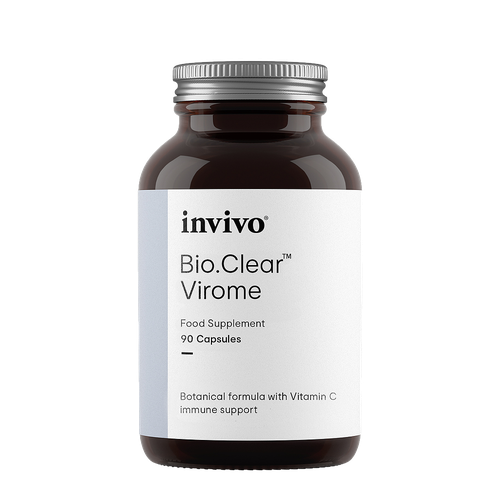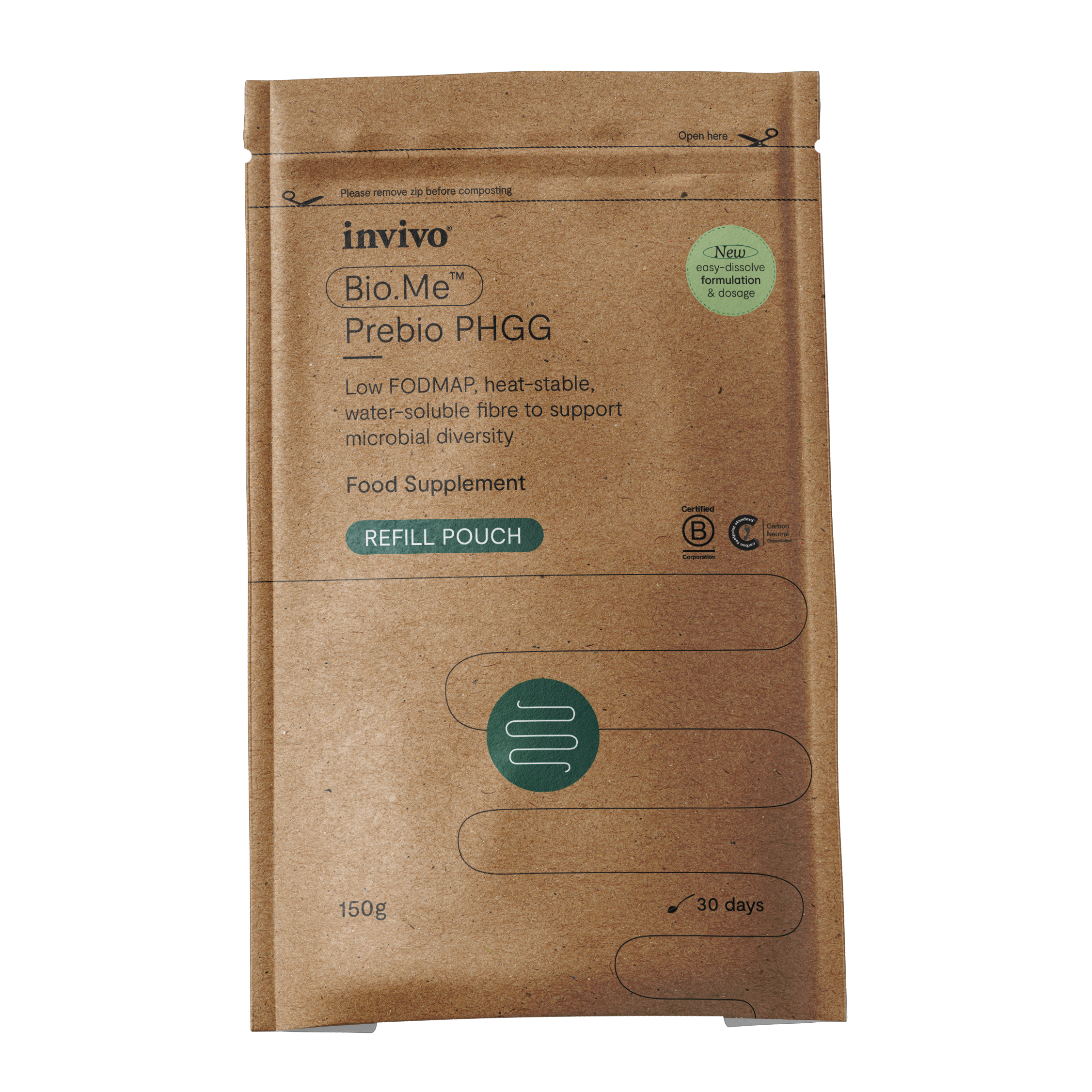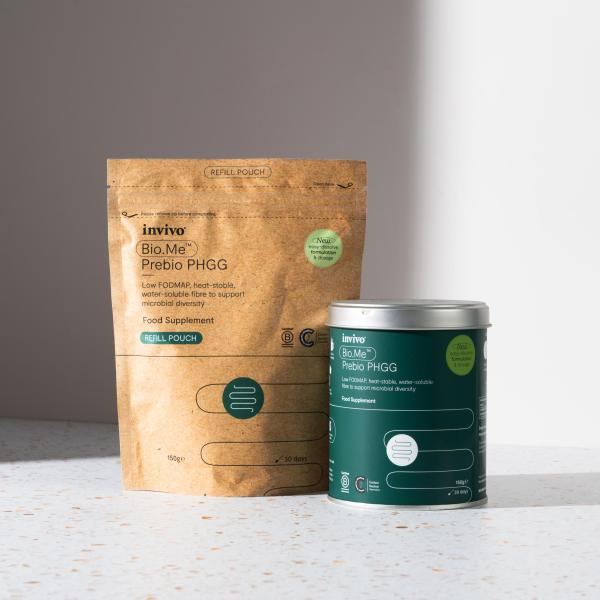The vulvo-vaginal area has its own distinct commensal microbiome which differs from the other microbiomes in the body. The composition of the microbiome and its dialogue with host immune responses in the vagina plays a role in vaginal, reproductive and maternal health. Dysbiosis of the vaginal flora can play a large role in infertility, frequent miscarriage, endometriosis, pre-term birth, frequent urinary tract infections, bacterial vaginosis, vaginismus and vagino-vulval itching and discomfort.
Key bacteria for vaginal health: Lactobacilli spp.
The species that are present in the vaginal mucosa vary between premenopausal woman and those who have gone through menopause. The microbiota of healthy premenopausal woman is generally dominated by Lactobacillus species, which is an accepted marker of vaginal health and indicates functional host-microbial interactions. The most common Lactobacillus species are L. iners, L. crispatus, L. gasseri, L. jensenii, followed by L. acidophilus, L. fermentum, L. plantarum, L. rhamnosus, L. brevis, L. casei, L. vaginalis, L. delbrueckii, L. salivarius, and L. reuteri (1).
Lactobacilli are extremely important for vaginal health due to their protective and antimicrobial functions. Lactobacilli produce lactic acid, which is a hallmark feature of a ‘normal’ vaginal microbiome, creating an acidic environment (pH 2.8–4.2) that is inhospitable to many non-Lactobacillus commensals and potential vaginal pathogens (2,3). For example, reduced infectivity of Chlamydia trachomatis by L. crispatus, via lactic acid production and acidic pH, has been reported in vitro (4).
Lactic acid also induces autophagy in epithelial cells to degrade intracellular microorganisms and promote homeostasis (5). Additionally, some Lactobacillus species also produce anti-microbial compounds such as bacteriocins that inhibit growth of pathogenic microorganisms such as Candida albicans, Prevotella bivia and Escherichia coli (6).
In addition to their direct role in regulating vaginal health, Lactobacilli also modulate the host immune response, mediated through vaginal epithelial cells (7,8). Lactobacilli are tolerated by vaginal epithelial cells and inhibit induction of pro-inflammatory cytokines such as IL-6, IL-1β and TNF-α (9). Vaginal lactic acid has also been shown to mediate an anti-inflammatory response in the presence of inflammatory-inducing pathogens (10).
Introducing key Lactobacilli
Lactobacillus crispatus
L. crispatus is a high producer of lactic acid and is therefore associated with very acidic vaginal pH. It also produces antimicrobial peptides called bacteriocins, which help maintain homeostasis and prevent pathobiont growth, including BV-associated bacteria (11). Dominance is also linked to increased rates of conception and improved fertility (12).
Lactobacillus gasseri
L. gasseri is another producer of high amounts of lactic acid and anti-microbial peptides (13). L. gasseri produces a bacteriocin called gassericin E, that inhibits growth of BV-associated bacteria including Prevotella bivia, Gardnerella vaginalis, Atopobium vaginae, Mobiluncus mulieris and pathobionts Escherichia coli, Staphylococcus aureus and Streptococcus agalactiae, in vitro (14).
Lactobacillus jensenii
L. jensenii produces moderate-high amounts of lactic acid (15) and produces bacteriocins (13). L. jensenii has been shown to reduce growth and adherence of Gardnenella vaginalis and Prevotella bivia (15) and inhibit growth and hyphae formation of Candida albicans (16).
Lactobacillus iners
L. iners has a unique cell morphology and genome size compared to other Lactobacillus species. Its very small genome is evidence of rapid evolutionary changes, resulting in extensive gene loss. Compared to other Lactobacilli, it is reported to produce moderate levels of lactic acid (17). High levels of L. iners has been detected in women with BV, but also in healthy women (18). High levels have also been detected in women infected with Chlamydia trachomatis (19).
Lactobacillus plantarum
L. plantarum is a lactic acid producer (20) and is able to exhibit strong anti-microbial activity against pathogens including Escherichia coli (21). It is also able to attach to vaginal epithelial cells and significantly reduce the adhesion of Candida albicans. Indeed, it has been proven effective as a potential preventive agent of vulvo-vaginal candidiasis recurrences (22). L. plantarum may also shift the vaginal milieu toward a predominance of Lactobacilli with an improvement of the vaginal pH value (22).
Lactobacillus rhamnosus
L. rhamnosus can modulate the host immune response via TNF-α. A particular strain resulted in over 3,000 gene expression changes when administered to the vagina of premenopausal women and increased expression levels of some anti-microbial defences, similar effects are likely to be seen with other strains (1). It also produces anti-microbial compounds, which have been shown to be effective against BV-associated bacteria and Candida (1).
Conclusions
Lactobacilli are key to orchestrating and maintaining the vaginal ecosystem. Testing the vaginal pH gives an understanding of the acidity, and therefore, an indication of Lactobacilli presence. To delve further, DNA testing such as Vaginal EcologiX gives quantitative measures of different Lactobacilli species, as well as BV-associated bacteria, pathogens and Candida.
The vaginal ecosystem is one of the cornerstones of female and reproductive health. We need to start talking about vaginal health to our patients.




